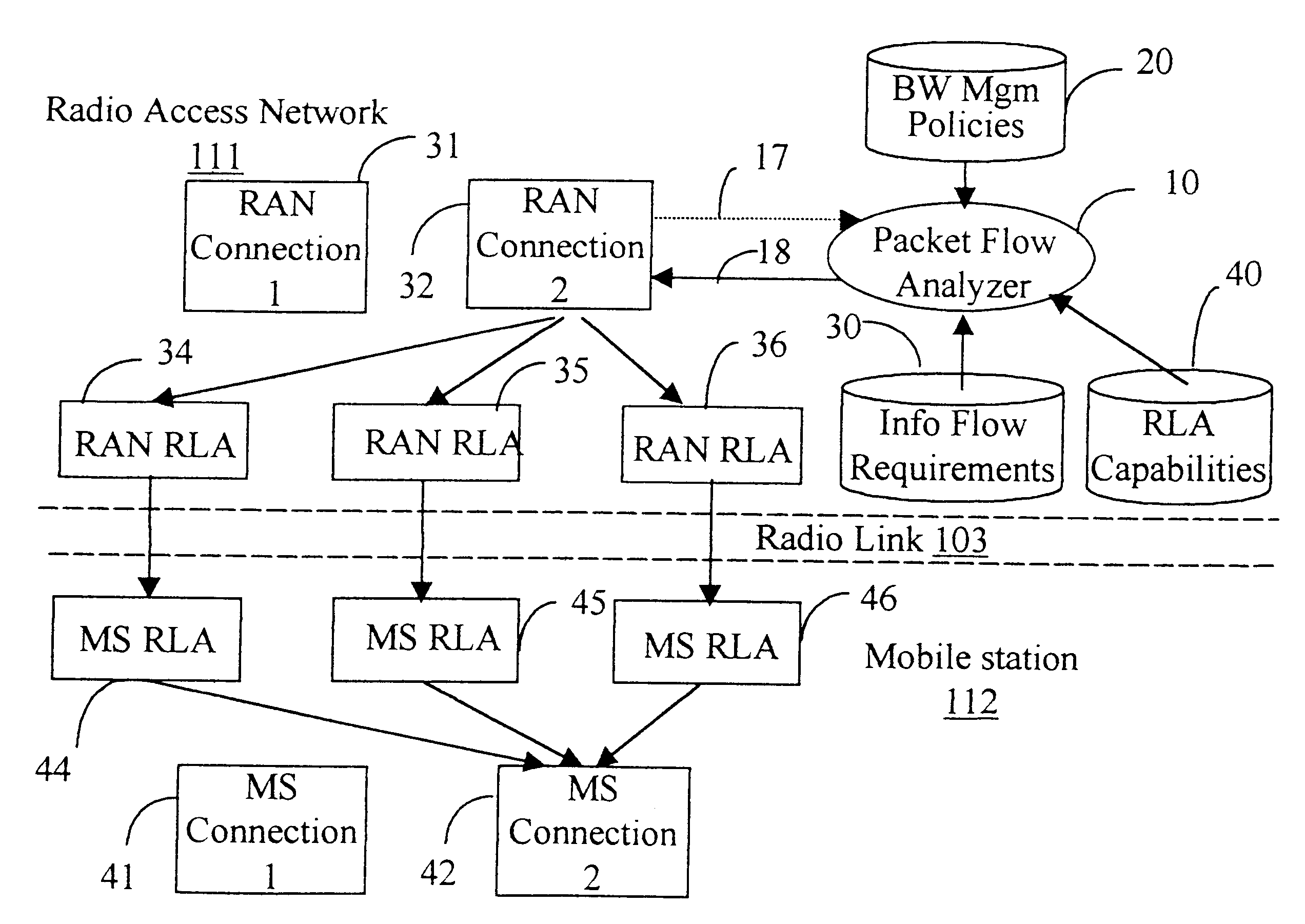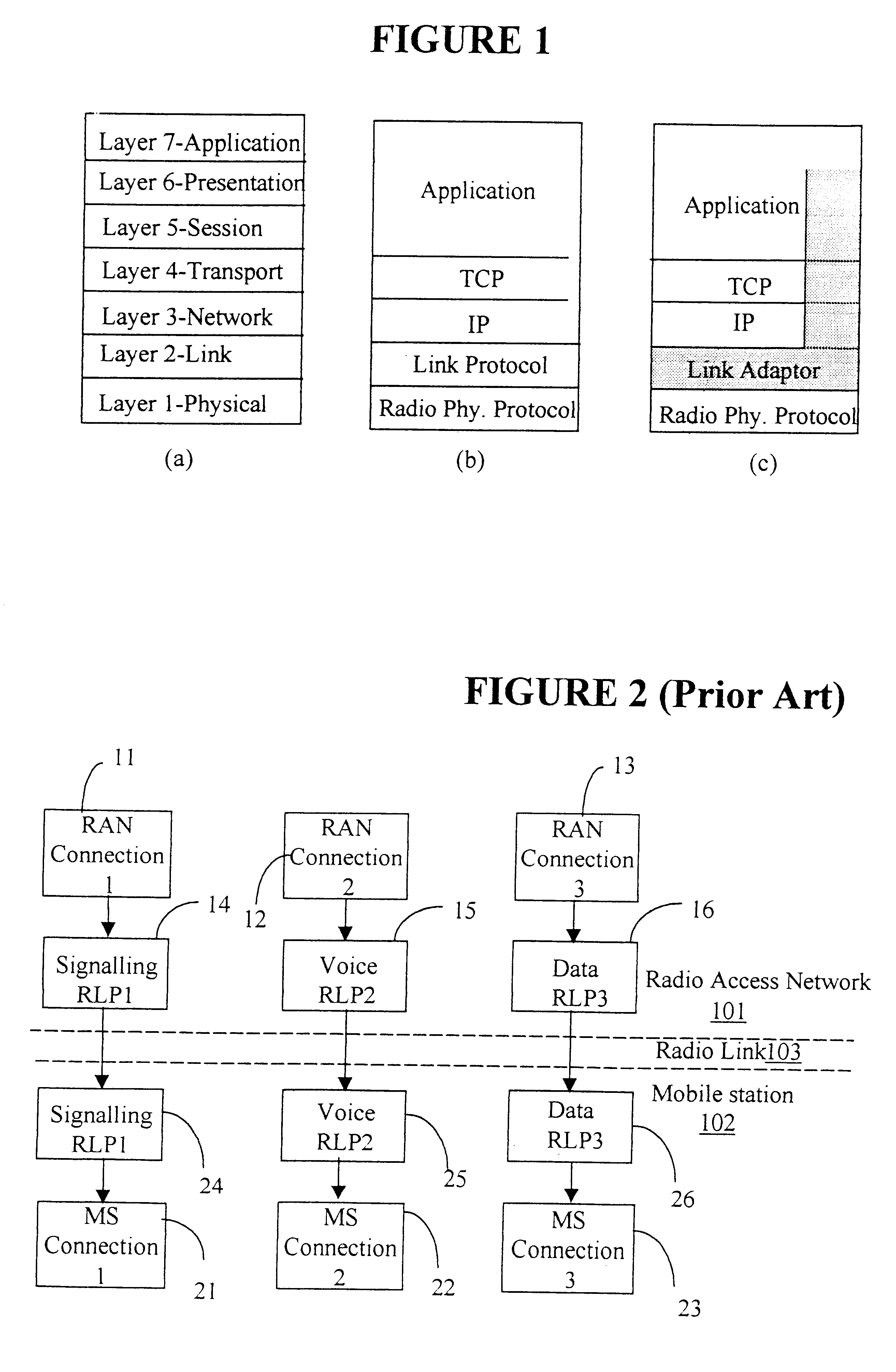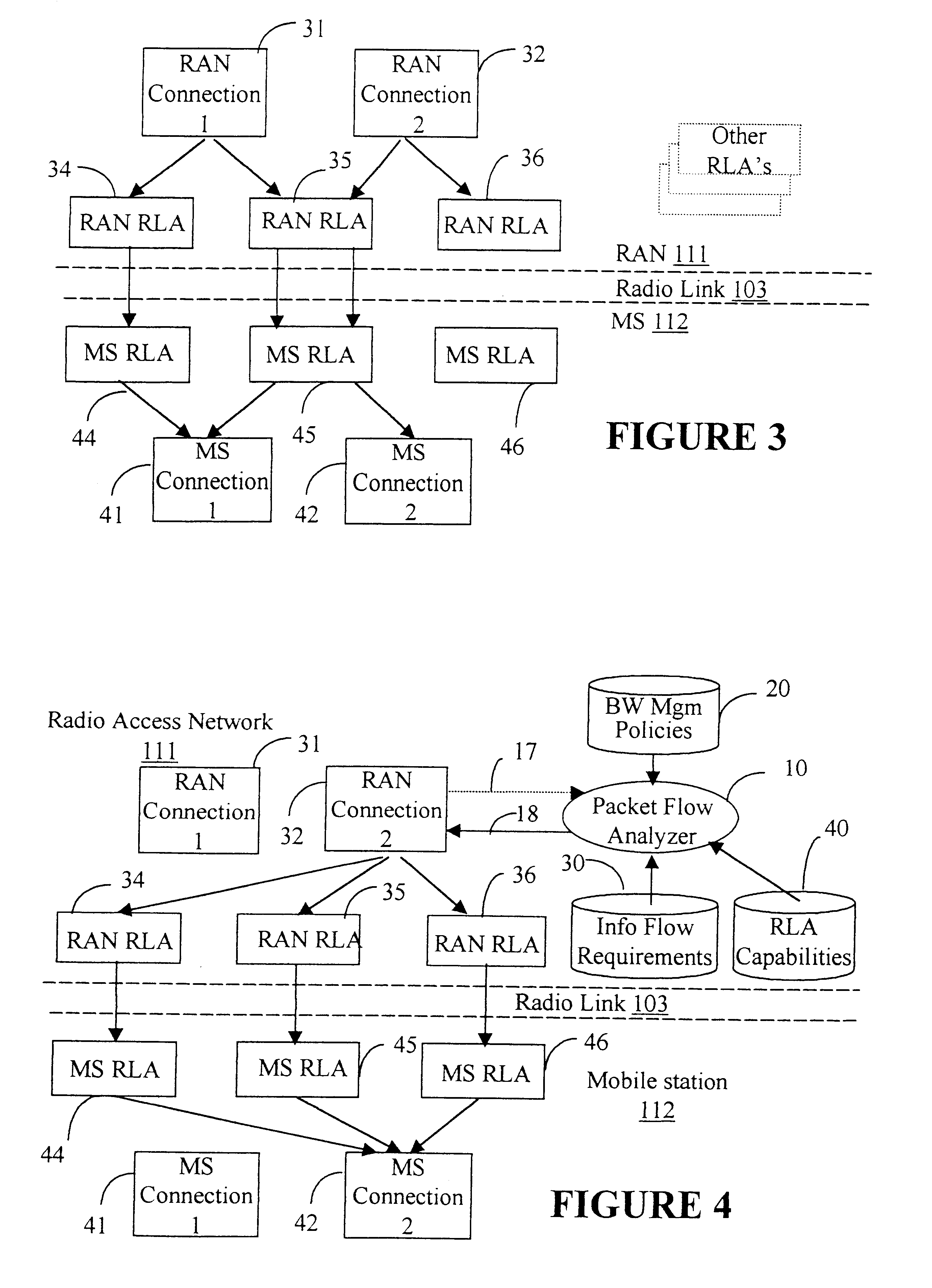Dynamic radio link adaptation
a radio link and dynamic technology, applied in the field of dynamic data link adaptation and wireless communication system, can solve the problems of tcp packet loss, no longer valid assumptions, and the assumption of essentially error-free transmission medium
- Summary
- Abstract
- Description
- Claims
- Application Information
AI Technical Summary
Problems solved by technology
Method used
Image
Examples
Embodiment Construction
FIGS. 1-a to 1-c show the OSI model and its application to this invention. FIG. 1-a show the OSI layers in general, and FIG. 1-b show the OSI layer affected by the link protocol. As shown in FIG. 1-b, a link protocol typically only operates at Layer 2 the link layer, of the protocol stack. The link protocol provides a fixed set of services to Layer 3 the Network Layer, and has no knowledge of the protocols used outside Layer 2.
The present invention provides a method and apparatus for improving the quality of service (QoS) for multimedia communications over a radio link, while giving priority to correctly delivering acknowledgments for information already received. According to the invention, a radio link adapter (RLA) is designed to provide services that closely match the type of service (ToS) requirements and that can be dynamically selected to transport information without having to recreate a connection.
A link adapter may operate at any and all levels of the protocol stack used b...
PUM
 Login to View More
Login to View More Abstract
Description
Claims
Application Information
 Login to View More
Login to View More - R&D
- Intellectual Property
- Life Sciences
- Materials
- Tech Scout
- Unparalleled Data Quality
- Higher Quality Content
- 60% Fewer Hallucinations
Browse by: Latest US Patents, China's latest patents, Technical Efficacy Thesaurus, Application Domain, Technology Topic, Popular Technical Reports.
© 2025 PatSnap. All rights reserved.Legal|Privacy policy|Modern Slavery Act Transparency Statement|Sitemap|About US| Contact US: help@patsnap.com



